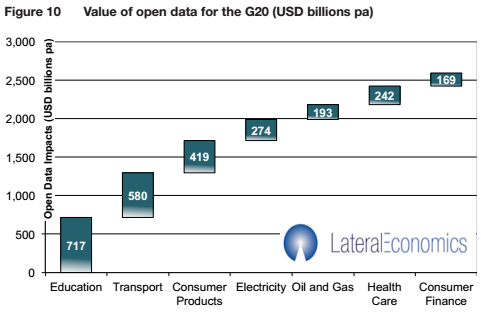The future of offices: facilitating interaction and making work fun
Last week I was interviewed on the Daily Edition TV program about the future of offices.
Click on the image below to see a video of the interview.
Last week I was interviewed on the Daily Edition TV program about the future of offices.
Click on the image below to see a video of the interview.
Yesterday I attended the Sydney launch event of the Respect Network, an initiative designed to allow individuals to own and take control of their data.
They played this video, narrated by John Hurt, who starred in the film 1984. Apparently American audiences have thought this clip to be highly controversial, however it seems to provide a reasonable view of how things are.
Take Back Control from Respect Network on Vimeo.
A week ago I gave a keynote to a relatively small but rapidly growing professional services firm on the occasion of their 10th birthday celebration, to help them think about their next decade of business.
My presentation began with macro trends, then drilled into shifts in the professional services landscape, and finally onto the leadership required to create the future of professional services.
The theme that the group picked up on the most which drove our ensuing conversation was how they could tap external experts to generate value for clients.
Read more →
My Newspaper Extinction Timeline is now well over 3 years old, in which time it has been viewed many millions of times and appeared in publications in over 30 countries. There has been a revival of interest recently from the extensive coverage of a keynote I gave at Arab Media Forum in Dubai last month and comments I made afterwards.
Many commentators on my framework seem to equate newspapers with newspaper companies. That is completely incorrect.
Such a thing as a “newspaper” company has ceased to exist except in regional areas of developing countries. What were newspaper companies are now news organizations.
The death of news-on-paper absolutely does not imply the death of news organizations. In fact it is an enabler of their rebirth.
Dominique Delport, the very switched-on Global MD of Havas Media Group, has created an excellent slide deck titled Newspapers: The End… Seriously? (embedded below). He opens with my Newspaper Extinction Timeline and goes on to paint a bright future for the industry.
I was very pleased to see today’s launch of the report Open for Business: How Open Data Can Help Achieve the G20 Growth Target, from Nicholas Gruen’s Lateral Economics, commissioned by Omidyar Networks, the philanthropic organization of eBay founder Pierre Omidyar.
The report looks at the massive positive economic impact of governments adopting open data policies.

Source: Open for Business
The major figure from the report is that potential value from open data to the G20 nations is $2.6 trillion annually, or around 1.1% of GDP over the next 5 years. The major sectors where value accrues from open data policies are Education, Transport, Consumer Products, Electricity, Oil and Gas, Health Care, and Consumer Finance.
As the report explains:
Read more →
This morning I was interviewed on the Morning Show about next generation technologies including holograms on smartphones, machine to machine (M2M) communication, neuro-hacking and brain implants.
Click on the image to see a video of the segment.
The possibility of holograms on smartphones is absolutely compelling.
Back from when the first smartphones came out I pointed to the interfaces as the critical enabler of rich computing on-the-go, as shown for example in my Future of the Media Lifecycle framework.
Read more →
Crowdfunding is central to my interests in understanding the future. My background in capital markets and long-standing perspective of the living networks has made it a natural space for me, in looking at new ways our collective financial resources can yield the greatest economic and social benefit.
I was recently named one of the top 30 influential thought leaders in crowdfunding in the world (of which there are only 2 outside the US). I think it’s fair to say that’s an exaggeration of my prominence, however as I am increasingly focusing on the future of crowdfunding I hope the insights and perspectives I am currently developing will have a significant reach.
One of the most obvious ways in which crowdfunding can have a far broader impact than it does today is in playing a role alongside government, by allocating funds to benefit citizens. The “civic crowdfunding” space, focused on funding local community projects such parks, community centers, festivals, and education, has thrived, with platforms such as Spacehive and Neighborly doing well, and strong enthusiasm from cities such as Bristol.
Read more →
As reflected by the title of this blog, networks have long been at the heart of how I see the world.
I have applied the tools and approaches of network analysis to a wide variety of domains, including organizational analysis, industry analysis, client relationship analysis, influence networks, sales and innovation networks, high-performance personal networks, and far more.
Much of my work today is helping organizations and senior executives to think effectively about the future, so as to set and implement effective strategies for success. However network analysis is an invaluable complement to that work, applying it as a tool to help improve performance.
In a networked world, we must understand the networks in which we are embedded.
On RossDawson.com I have just published a brief piece Futurists on Twitter: An analysis of network centrality and authority.
The chart showing the network analysis is shown below, uncovering authority and centrality among futurists on Twitter. Zoom in by clicking on the image.
Read the article for full details on the analysis.
At the launch of the Safeguarding the Future of Digital Australia in 2025 report I authored for McAfee, part of Intel Security, a question came up about the implications of social media indiscretions.
Angus Kidman of Lifehacker describes my response in an article Will Social Media Indiscretions Really Wreck Your Career?
Futurist Ross Dawson, who contributed to the report, agreed when I asked that question at the launch. “If everybody has something dark online, then you haven’t got anybody left to hire anymore,” he said. “So I think we will be more tolerant, because we’re seeing more of everybody’s lives. Many employers will feel that they’re happy to accept a few foibles on social media.”
“Human brains are malleable,” Dawson pointed out. “We are shaped by our environment, and our younger generation are in a different environment, This is something we must understand, and it’s not that it’s being different is wrong. And ultimately there will be more career opportunities for those who are engaged in the social world.”
This is not a new thought. Back in 2007 women’s magazine Madison ran a piece on the dangers of social media sharing quoting me. In those days it was important to highlight the risks of oversharing, as many people hadn’t yet fully grasped the implications of what they share online.
Read more →
I have been recently working with McAfee, now part of Intel Security, to write a report on Safeguarding the Future of Digital Australia in 2025, being launched this morning in Parliament House in Canberra as part of the Federal Government’s Stay Smart Online Week.
 The report consists of my insights into the Future of Home, Social, Work, and GenNext in 2025, together with commentary from McAfee and other experts on how to keep safe in these worlds.
The report consists of my insights into the Future of Home, Social, Work, and GenNext in 2025, together with commentary from McAfee and other experts on how to keep safe in these worlds.
McAfee_Future_of_Digital_Australia
Click on the report cover image left to download the report.
Accompanying the report, we did a survey of what Australians think about their digital future in 2025. The results of the survey are in the video below. There are some fascinating insights.
For now, please feel free to share the resources. I would love to hear your thoughts on the report.
